What is indoor target archery? How do you play the game? How is the gear different from bowhunting equipment? These are a few of the questions that bowhunters often ask when they start to think about shooting paper instead of animals. So let’s take a look at the various aspects of indoor archery along with this similarities and differences to bowhunting.
Indoor archery tournaments can be as varied as the organizations holding them, but there are two basic formats – each requiring archers to shoot at targets 20 yards away.
The Vegas Round
The first type is called a Vegas Round. This involves an archer shooting 30 arrows at a 40 cm target face. Each archer shoots three arrows at a time. That’s called an “end.” Arrows are scored and pulled after each end.
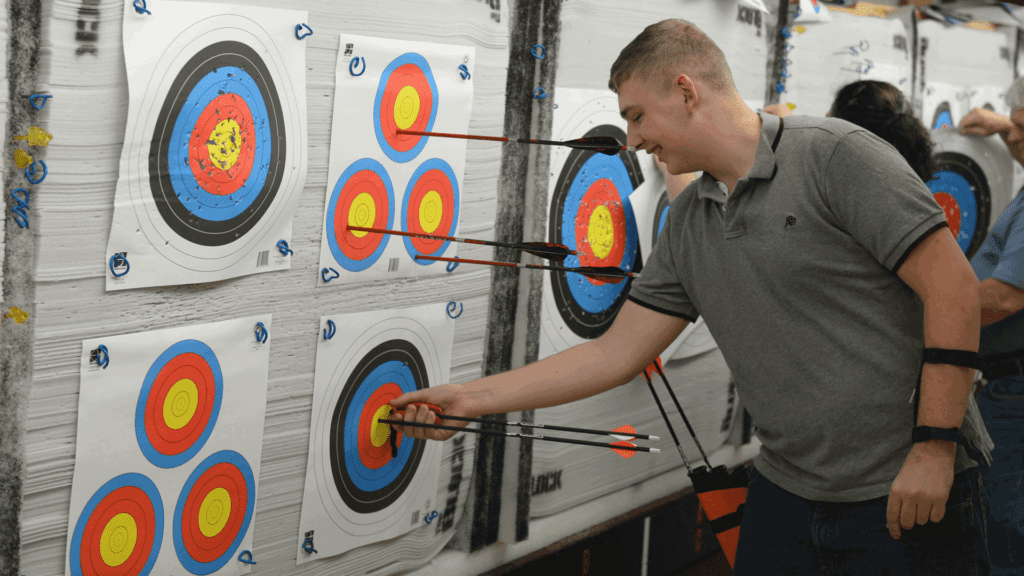
Here’s an archer shooting a Vegas Round.
An archer can choose to shoot all three arrows at one target, or they can shoot at a piece of paper bearing three targets, called a three-spot target. One arrow would be shot at each of those targets.
Recurve archers tend to choose the single-face targets, while compound archers often opt for the three-spot target, because they would constantly hit and break their own arrows in a single-spot target.
In all Vegas Round targets, there will be a center ring with a “+” in the middle that’s the size of a penny. In some tournaments, that ring is called an “X.” X’s are worth 10 points and are recorded for breaking ties. A perfect Vegas round score under these rules would be 300 with 30 X’s.
In other tournaments, the X ring is worth 11 points. So a perfect Vegas round score under these rules would be a 330.
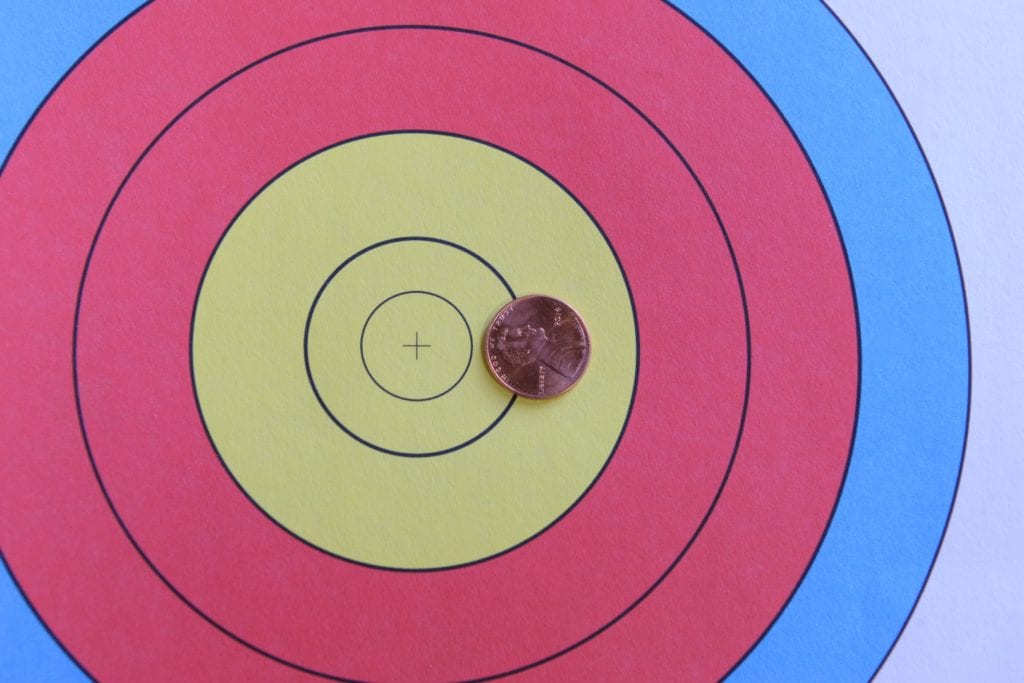
The X ring on a Vegas target is the size of a penny.
Extending out from the X ring on a Vegas face, there are scoring rings worth 10 and 9 points in yellow, 8 and 7 points in red and 6 points in blue. Those are the only scoring rings on a three-spot target. On the single-spot, the rings continue out with a 5-point blue ring, rings worth 4 and 3 points in black and 2 points and 1 point in white.
NFAA/5-Spot
In an NFAA indoor round, archers shoot at what’s called a 5-spot face. These targets are the same size as the Vegas round faces, but the scoring is different. Archers shoot 12 ends of five arrows apiece to fill their targets – one arrow per target. That’s 60 arrows total. The center ring, which is 1.5 inches across, bears an X, is worth 5 points and is used to break ties.
Extending out, there is a 5-point white ring, followed by two blue rings worth 4 and 3 points, respectively. A perfect NFAA indoor round is a 300 with 60 Xs.
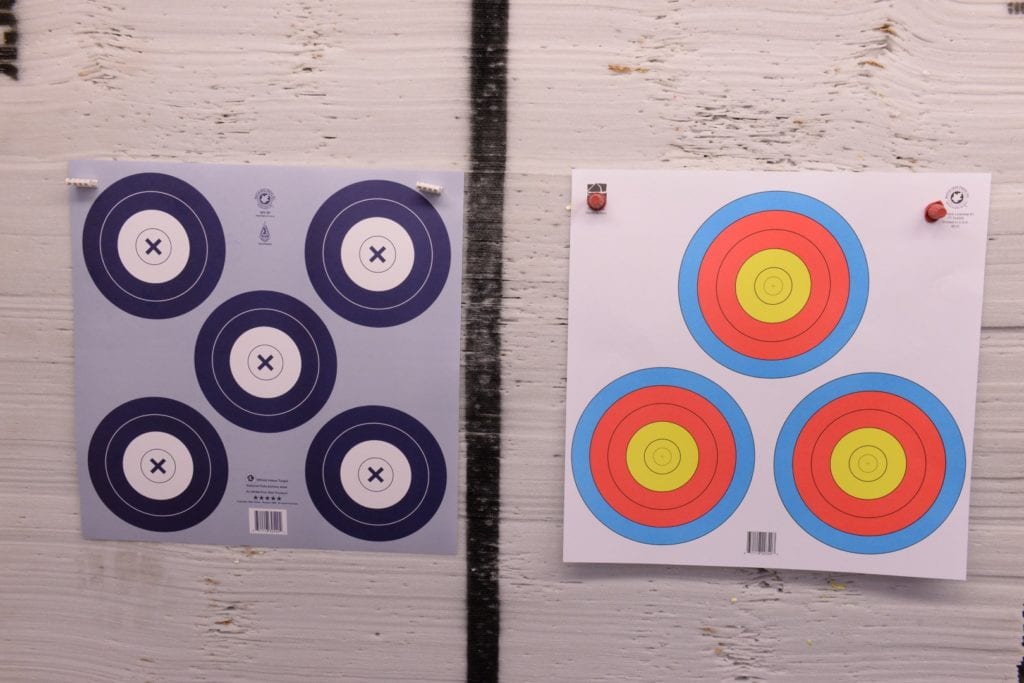
NFAA 5-spot target on the left, and a Vegas Round 3-spot target on the right.
In either discipline, an archer’s arrow need only touch the line of a scoring ring to earn the points awarded by that ring. So if an arrow sits entirely in the 9-point ring on a Vegas face, but the shaft is clearly touching the 10-point line, that arrow would score a 10.
Indoor Archery Gear
For indoor archery, consistent precision shooting is the name of the game. In many instances just one arrow falling out of the highest scoring ring can cost an archer a win.
Stabilizers
Due to the high level of the precision demanded, indoor archers shoot some special gear. In the open class you’ll see them using long front stabilizers up to 36 inches, and long side rods up to 15 inches – each bearing significant amounts of weight. Those stabilizers and weights are intended to make the bow rock steady as the archer aims.
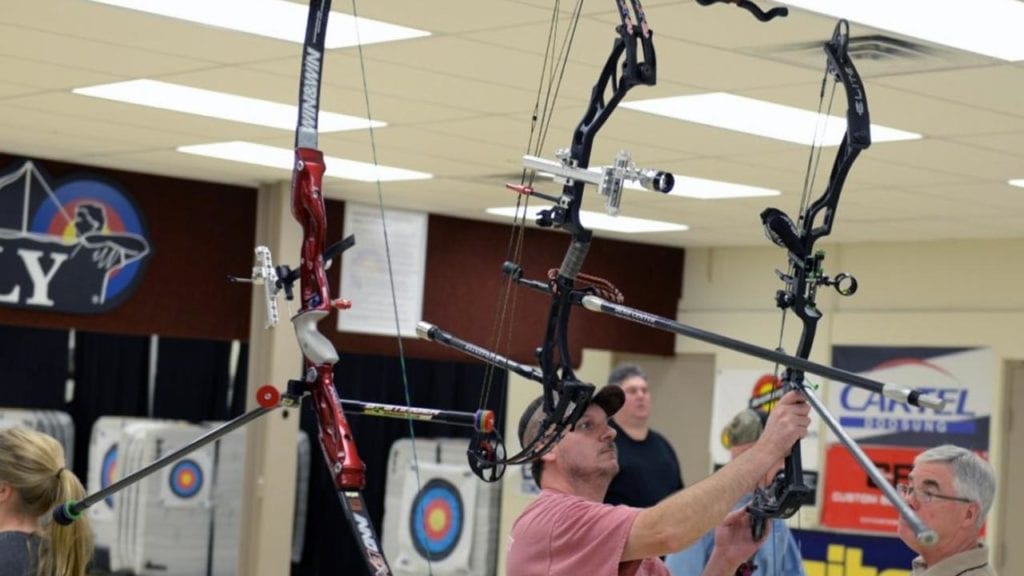
Typical indoor target archery bows will feature long stabilizers on the front and sidebars or backbars which extend back toward the archer.
Sights
For sights, you’ll see most open-class archers using scopes bearing magnifying lenses. Common lenses are 2, 4 and 6-power, with some archers opting for lenses up to 10 power. Some archers will have simple dots stuck to the center of their lenses, or they will use lighted pins.
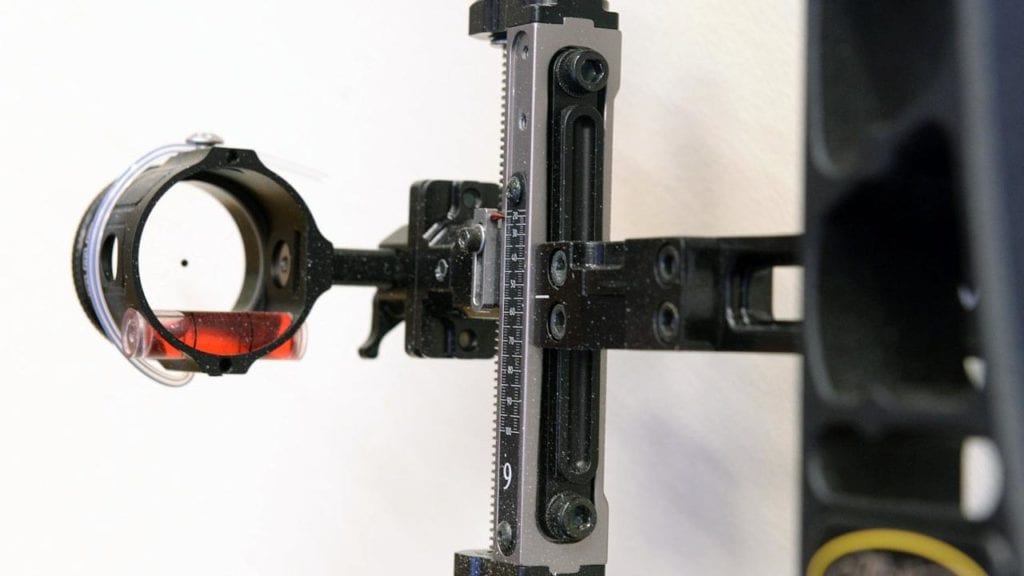
Here’s a typical indoor target archery sight, featuring a long sight bar and a scope with a magnifying lens and a dot for aiming.
Most indoor archery tournament organizers feature bowhunter classes in their competitions. These classes are meant to be limited to archers shooting equipment similar to what they’d take hunting. Specific rules vary from organization to organization, but generally, most organizations limit front stabilizers to a maximum of 12 inches, sights must have fixed pins and magnifying lenses are not allowed. Siderods usually are permitted.
Arrows
Many indoor archers shoot large diameter arrows, as compared to typical hunting arrows which seem to be getting thinner by the year. Some of the biggest arrows are double the size of a typical hunting arrow. The advantage of these large diameter arrows is they take up more space in the target, and therefore are more likely to cut a scoring line. Remember, all you have to do is touch a scoring ring to earn those points.
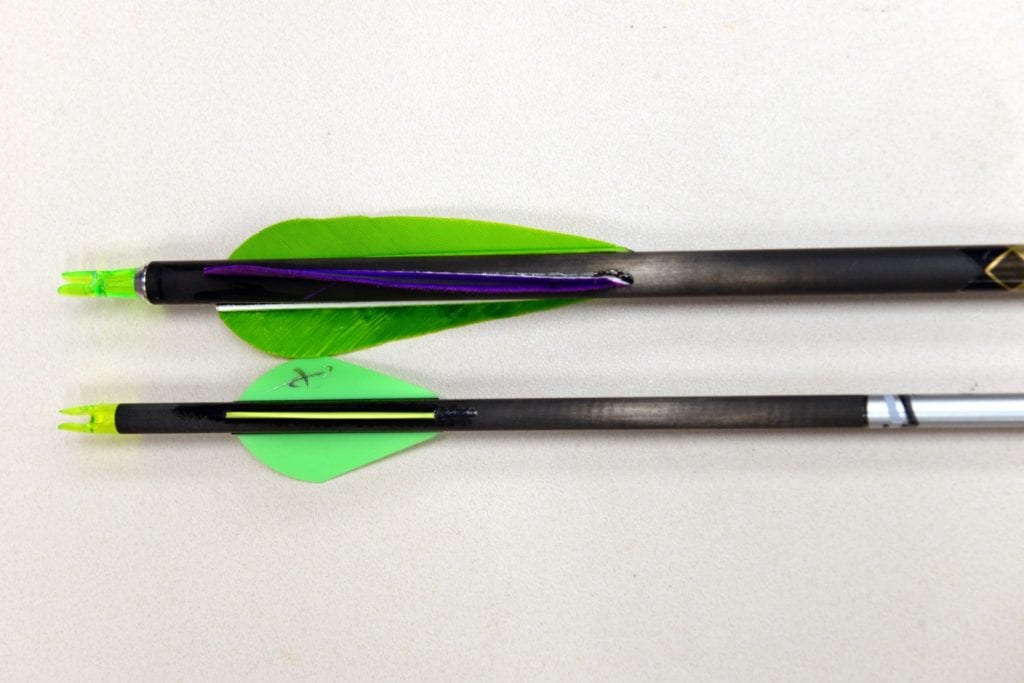
Notice how the target arrow on the top is much thicker and has larger fletchings than the typical hunting arrow on the bottom.
Since indoor target archers shoot in a controlled environment at a constant distance, arrow speed isn’t anywhere near as important to them as consistent, accurate arrow flight. As a result, indoor archers often shoot heavy points – up to 300 grains – and long vanes or feathers – up to 5 inches. Both promote consistent, accurate arrow flight.
Releases
For compound archers, hinge-style releases are the norm. These T-handle releases have no trigger, but rather, they rely on the rotation of the handle to release the string hook and fire the arrow.
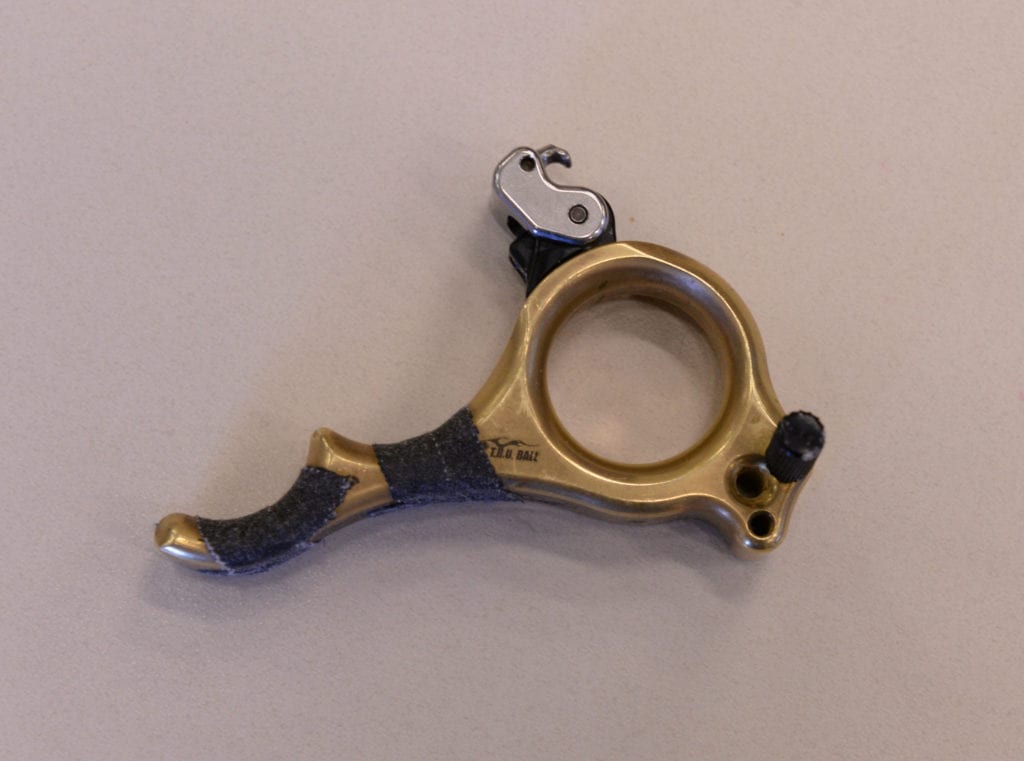
An example of a typical hinge-style release used for indoor target archery.
This style of release best produces a surprise release of the string. Releases that employ triggers can cause problems with flinching in indoor shooting. Because the aiming point is so small, archers often will punch the trigger as soon as their scope or pin touches the bull’s-eye. And when you punch a trigger repeatedly, you start to anticipate the shot, which inevitably results in flinching.
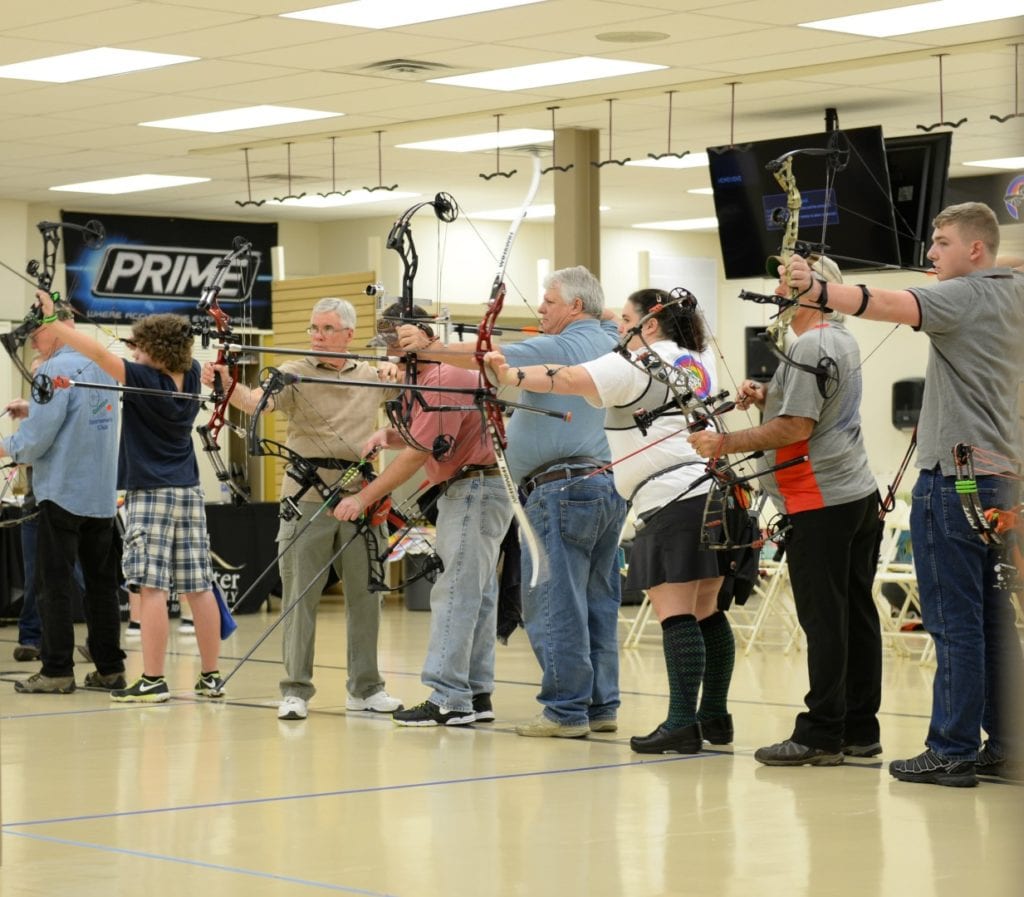
Indoor archery appeals to archers of various ages and skill levels.
Local archery pro shops and archery clubs all over the country often hold indoor leagues and tournaments throughout the winter.
If you want to experience a higher level of competition, there are a number of large indoor tournaments held every winter, including the Lancaster Archery Classic in Lancaster, Pa., The Vegas Shoot in Las Vegas and the Iowa State Archery Association’s Pro-Am in Des Moines. Also, USA Archery and the National Field Archery Association each host national indoor tournaments each winter.
For all your indoor target archery needs, be sure to visit www.lancasterarchery.com.

 By
By 



